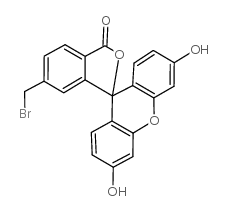Effect of magnetic nanoparticles on tobacco BY-2 cell suspension culture.
Olga Krystofova, Jiri Sochor, Ondrej Zitka, Petr Babula, Vit Kudrle, Vojtech Adam, Rene Kizek
文献索引:Int. J. Environ. Res. Public Health 10 , 47-71, (2013)
全文:HTML全文
摘要
Nanomaterials are structures whose exceptionality is based on their large surface, which is closely connected with reactivity and modification possibilities. Due to these properties nanomaterials are used in textile industry (antibacterial textiles with silver nanoparticles), electronics (high-resolution imaging, logical circuits on the molecular level) and medicine. Medicine represents one of the most important fields of application of nanomaterials. They are investigated in connection with targeted therapy (infectious diseases, malignant diseases) or imaging (contrast agents). Nanomaterials including nanoparticles have a great application potential in the targeted transport of pharmaceuticals. However, there are some negative properties of nanoparticles, which must be carefully solved, as hydrophobic properties leading to instability in aqueous environment, and especially their possible toxicity. Data about toxicity of nanomaterials are still scarce. Due to this fact, in this work we focused on studying of the effect of magnetic nanoparticles (NPs) and modified magnetic nanoparticles (MNPs) on tobacco BY-2 plant cell suspension culture. We aimed at examining the effect of NPs and MNPs on growth, proteosynthesis - total protein content, thiols - reduced (GSH) and oxidized (GSSG) glutathione, phytochelatins PC2-5, glutathione S-transferase (GST) activity and antioxidant activity of BY-2 cells. Whereas the effect of NPs and MNPs on growth of cell suspension culture was only moderate, significant changes were detected in all other biochemical parameters. Significant changes in protein content, phytochelatins levels and GST activity were observed in BY-2 cells treated with MNPs nanoparticles treatment. Changes were also clearly evident in the case of application of NPs. Our results demonstrate the ability of MNPs to negatively affect metabolism and induce biosynthesis of protective compounds in a plant cell model represented by BY-2 cell suspension culture. The obtained results are discussed, especially in connection with already published data. Possible mechanisms of NPs' and MNPs' toxicity are introduced.
相关化合物
| 结构式 | 名称/CAS号 | 分子式 | 全部文献 |
|---|---|---|---|
 |
5-溴甲基荧光素
CAS:148942-72-7 |
C21H13BrO5 |
|
Labeling the (Ca(2+)-Mg2+)-ATPase of sarcoplasmic reticulum ...
1993-06-15 [Biochemistry 32 , 6095, (1993)] |
|
Rapid long-range proton diffusion along the surface of the p...
1995-01-17 [Proc. Natl. Acad. Sci. U. S. A. 92(2) , 372-6, (1995)] |
|
5-Bromomethyl fluorescein (5-BMF) for derivatization of carb...
1995-06-01 [Pharm. Res. 12(6) , 930-6, (1995)] |
|
Measurement of thiol-containing amino acids and phytochelati...
2002-01-01 [Electrophoresis 23(1) , 81-7, (2002)] |
|
Analysis of gamma-(cholesteryloxy)butyric acid in biologic s...
1996-01-15 [Anal. Chem. 68(2) , 327-32, (1996)] |